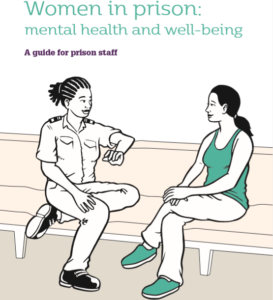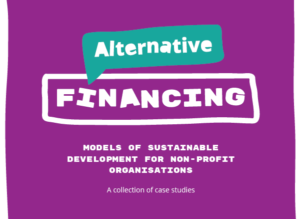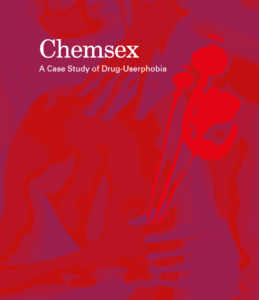Within EU-funded COVID-19 Solidarity Programme for the Eastern Partnership countries AFEW International prepares regular updates on the COVID-19 developments in the region – Armenia, Azerbaijan, Belarus, Georgia, Moldova, and Ukraine. What is the situation today? Please, check it here!
You can find previous updates in the COVID Corner on our website.
As of 27 October 2022
Regional overview
Confirmed daily COVID-19 cases in 2022, between 1 January 2022 and 26 October 2022 in the 6 countries of the Eastern Partnership

Source: Sciences Po Media lab Coronavirus Country Comparator
Situation report Armenia

Image: Worldometer
Cases of COVID-19
— Armenia is reporting that during the week of October 10-16th, 387 new cases have been confirmed, which is 56% less than 1 week earlier.
— There have been 445,100 infections, 8,706 coronavirus-related deaths, and 434,017 recoveries reported in Armenia since the pandemic began.
Recent local developments caused by COVID-19
— As of May 1, 2022, Armenia has waived the requirement of passengers to present a vaccination document or negative PCR test upon entry. Armenia remains open to foreign visitors by air and land.
— The quarantine regime, which replaced the state of emergency in Armenia in September 2020, had expired on June 20, 2022, thereby annulling all remaining quarantine measures.
— The government of Armenia is reporting on Activities neutralising social consequences of COVID-19, including such beneficiaries as families with children, the unemployed, pregnant women, entrepreneurs and workers in the business sectors hit most by the pandemic, socially deprived families, and students. Beneficiaries can submit proposals to receive financial aid.
— A recent brief by The Committee on the Elimination of Discrimination against Women cites that one of the effects of COVID-19 on women such as women who have been laid off in Armenia and other countries is the deteriorating discrimination against women.
Vaccine
— Armenia has administered at least 2,150,112 doses of COVID vaccines so far. Assuming every person needs 2 doses, that’s enough to have vaccinated at least 33% of the country’s population.
Situation report Azerbaijan

Image: Worldometer
Cases of COVID-19
— Azerbaijan reported 41 new COVID-19 daily cases on October 27th.
— There have been 823,064 infections, 9,941 coronavirus-related deaths, and 812,806 recoveries reported in Azerbaijan since the pandemic began.
Recent local developments caused by COVID-19
— On September 20, the Chairman of the Health Committee of the Azerbaijani Parliament Akhliman Amiraslanov announced the parliament will hold hearings in relation to the COVID-19 pandemic to discuss precautionary measures and the situation in the country. Two days later, Azerbaijan’s Minister of Health Teymur Musayev stated that the COVID-19 pandemic is “nearing its end” due to low mortality rates in Azerbaijan. However, he urged citizens to vaccinate.
— The quarantine regime is in place in Azerbaijan until 6:00, 1 November 2022. This entails the requirement of a full COVID-19 vaccination or recovery document for entry to the country and to public services such as malls, hotels, theaters, and restaurants. Since 15 april 2022, PCR tests are not required nor accepted upon entry. Facemasks are recommended, but not required. In addition, borders with neighboring countries are closed, and travelling is only possible by plane.
Vaccine
— Azerbaijan has administered at least 13,857,111 doses of COVID vaccines so far. Assuming every person needs 2 doses, that’s enough to have vaccinated at least 49% of the country’s population.
Situation report Belarus

Image: Worldometer
— The Minister of Health of Belarus Dmitry Pinevich announced that “there is now a slight increase in the incidence of acute respiratory infections, as well as influenza and coronavirus, but the rate of increase is now half as high as in the fall of 2021”.
— There have been 994,037 infections, 7,118 coronavirus-related deaths, and 985,592 recoveries reported in the country since the pandemic began.
Recent local developments caused by COVID-19
— On April 3rd, Belarus has lifted its covid-related borders restrictions, which were in place since October 2020. Now Belarus citizens can now freely cross the border, while foreign travelers can enter Belarus with a PCR test or vaccination proof. Citizens of Russia and Ukraine are exempted from this requirement due to the geopolitical situation.
— Schools and workplaces have no lockdown measures or recommendations. People are no longer encouraged to stay at home or isolate.
Vaccine
— Belarus has administered at least 16,102,869 doses of COVID-19 vaccines so far. Assuming every person needs 2 doses, that’s enough to have vaccinated about 68% of the country’s population.
— Belarus has received a Cuban produced vaccine “Soberana Plus ST”, reports the Ministry of Health.
— A locally produced medicine “Mirobivir” developed to treat heavy forms of COVID-19 is now being sold in pharmacies exclusively with prescription.
— On October 26th, it has been reported that more than 6.5 million Belarussians are fully vaccinated against COVID-19
Situation report Georgia

Image: Worldometer
— There have been 1,780,691 infections, 16,900 coronavirus-related deaths, and 1,637,293 recoveries reported in the country since the pandemic began.
Recent local developments caused by COVID-19
— Amiran Gamkrelidze, the Head of the National Centre for Disease Control, assures that the “pandemic situation in Georgia is under control” as figures of coronavirus-related deaths have been unchanged for weeks.
— Practically, all the restrictions and regulations have been waived, except for the uniform wearing of masks. Facemasks are mandatory only at healthcare facilities and in public transport. Since May 2, 2022, it is no longer compulsory to wear the facemask at schools or outside.
— A complete report on government measures implemented in Georgia against COVID elaborates on the four stages from preventing to slowing, managing, and adapting to the coronavirus.
— The National Center for Disease Control and Public Health (NCDC) published the latest, 9th report on the summary analysis of COVID-19 statistics in Georgia, dated to August 4th.
Vaccine
— Georgia has administered at least 2,930,677 doses of COVID vaccines so far. Assuming every person needs 2 doses, that’s enough to have vaccinated about 34% of the country’s population.
Situation report Republic of Moldova

Image: Worldometer
— Moldova reported 623 new COVID-19 cases during the week 10-16th October, which is 43% less than the week before.
— There have been 593,246 infections, 11,887 coronavirus-related deaths, and 504,142 recoveries reported in Moldova since the pandemic began.
Recent local developments caused by COVID-19
— There are no local travel restrictions in place in Moldova. Moldovan authorities have removed most of the COVID-19 related bans. All public spaces, including markets, restaurants, bars, theatres, cinemas are operating as usual, without any limit on the numbers of guests. No COVID-19 certificate is required to access indoor or outdoor venues. Schooling is in-person.
— Epidemiologist at the Department of Preventive Medicine of the State University of Medicine and Pharmacy Luminica Gutsu noted that since the beginning of the year, the Omicron variant has been circulating in Moldova, to which a large part of the population already has antibodies. Therefore, Moldova can expect a spike in cases if new types of the virus enter the country. Luminica Gutsu noted that the increase in the number of flu patients is unlikely to be accompanied by an increase in COVID-19 infections.
Vaccine
— Moldova has administered at least 2,241,785 doses of COVID vaccines so far. Assuming every person needs 2 doses, that’s enough to have vaccinated at least 40% of the country’s population.
— NATO gave Moldova 10,000 express COVID tests and medical equipment worth over 40 million lei.
Situation report Ukraine

Image: Worldometer
COVID-19 cases
— The COVID-19 incidence in Ukraine is decreasing: in the week of October 17-23, there have been nearly 17 thousand new cases, which is about 53% less than 2 weeks ago. At the same time, there is high incidence of coronavirus-related deaths, totaling 200 in the past week.
— There have been 5,296,254 infections, 110,008 coronavirus-related deaths, and 4,904,953 recoveries reported in the country since the pandemic began.
Recent local developments caused by COVID-19
— On 7 October, a pilot project has begun in four regions of Ukraine that will test domestic wastewater for the presence of the SARS-CoV-2 virus. Testing wastewater for SARS-CoV-2 is a way to quantify and understand its overall presence in a population.
— Given the rise of COVID cases in Ukraine, the government is bringing back mandatory facemasks and other measures to contain the epidemic. Mandatory facemasks are being reinforced in Ternopil, Pavlograd, and partially in Sumy (since October 7th). Major cities including Kyiv and Ivano-Frankivsk are encouraging their citizens to wear masks as well.
— On October 25th, Cherkasy decided to return to wearing masks in shopping malls, retail establishments and public transport: this was due to the incidence of coronavirus disease in the city.
Vaccine
— Ukraine has administered at least 31,668,577 doses of COVID vaccines so far. Assuming every person needs 2 doses, that’s enough to have vaccinated at least 34% of the country’s population.
— During wartime, vaccination rates have slowed significantly. Before the war, 250,000 shots were administered in Ukraine daily. Currently, about 250,000 shots are administered per month, and there are about 2,500 vaccination locations in Ukraine.
— To combat this, Ukraine is now allowing second booster vaccinations (previously only one booster was allowed). In addition, Ukraine is encouraging vaccinations for children from the age of 5.
Interesting reads



